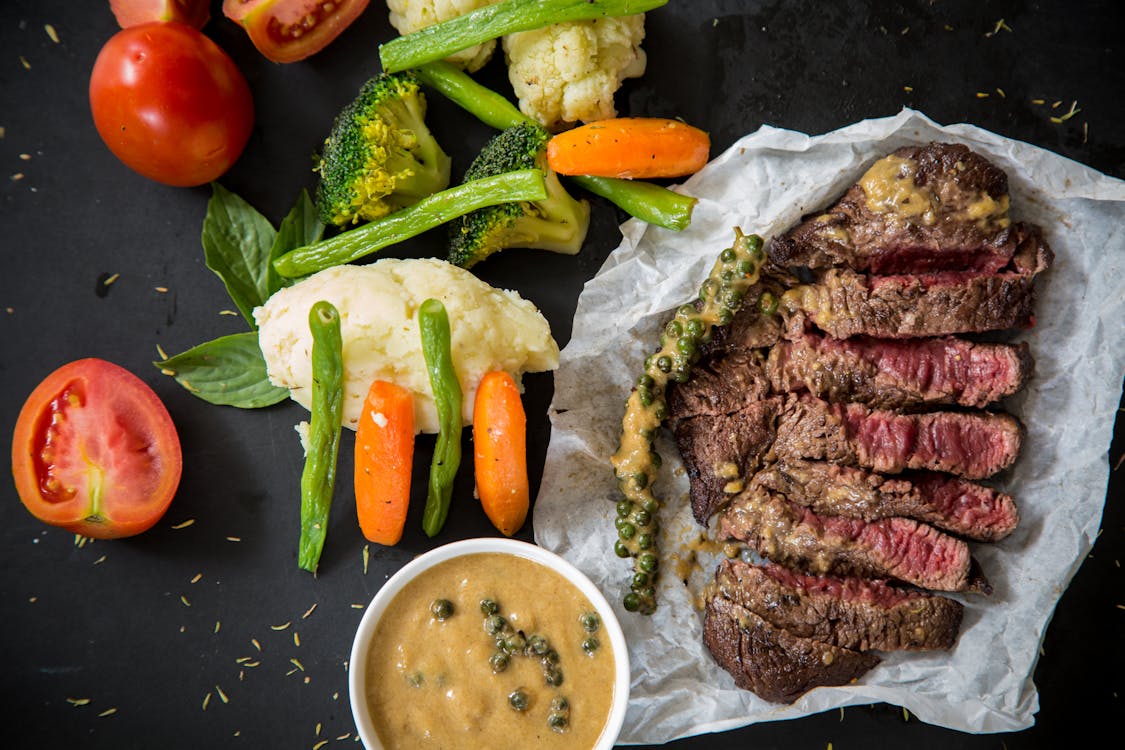Protein is an essential macronutrient that helps build and repair muscles, organs, and tissues. It also plays a role in hormone production, immune function, and energy metabolism. Animal protein sources, such as beef and chicken, are among the most popular and widely consumed foods in the world. But how do they compare in terms of nutrition, health benefits, and environmental impact? Let’s find out.
Nutrition

Beef and chicken are both rich sources of protein, providing about 26 grams and 31 grams per 100 grams of raw meat, respectively. However, they differ in their fat and calorie content. Beef is higher in fat, especially saturated fat, which can raise cholesterol levels and increase the risk of heart disease. Chicken is lower in fat, but also lower in some vitamins and minerals, such as iron, zinc, and vitamin B12.
According to the USDA, 100 grams of raw lean beef (90% lean, 10% fat) contains:
- Calories: 176
- Protein: 25.9 grams
- Fat: 8.1 grams
- Saturated fat: 3.3 grams
- Cholesterol: 74 mg
- Iron: 2.4 mg
- Zinc: 5.5 mg
- Vitamin B12: 2.4 mcg
On the other hand, 100 grams of raw chicken breast (skinless, boneless) contains:
- Calories: 120
- Protein: 30.6 grams
- Fat: 1.3 grams
- Saturated fat: 0.3 grams
- Cholesterol: 84 mg
- Iron: 0.6 mg
- Zinc: 0.8 mg
- Vitamin B12: 0.3 mcg
As you can see, chicken has fewer calories and less fat than beef, but also less iron, zinc, and vitamin B12. These nutrients are important for blood formation, immune function, and nerve health. Therefore, it is advisable to eat a variety of animal and plant protein sources to meet your nutritional needs.
Health Benefits
Both beef and chicken have some health benefits, depending on how they are prepared and consumed. Beef is a good source of high-quality protein, which can help you feel full and satisfied, as well as support muscle growth and maintenance. Beef also contains creatine, a compound that can enhance athletic performance and strength. Moreover, beef is rich in heme iron, which is more easily absorbed by the body than non-heme iron from plant sources. This can help prevent or treat iron deficiency anemia, especially in women and children.
Chicken is also a good source of high-quality protein, which can help you lose weight and maintain a healthy body composition. Chicken is lower in fat and calories than beef, which can help you reduce your total calorie intake and lower your risk of obesity and diabetes. Chicken also contains selenium, a mineral that has antioxidant and anti-inflammatory properties. Selenium can help protect your cells from oxidative stress and prevent chronic diseases, such as cancer and cardiovascular disease.
However, both beef and chicken can also have some health drawbacks, depending on how they are raised and processed. Conventionally raised beef and chicken are often exposed to antibiotics, hormones, and pesticides, which can accumulate in their tissues and affect your health. Processed beef and chicken products, such as sausages, nuggets, and burgers, are often high in sodium, preservatives, and additives, which can increase your blood pressure, cholesterol, and inflammation. Furthermore, cooking beef and chicken at high temperatures, such as frying, grilling, or roasting, can produce harmful compounds, such as heterocyclic amines (HCAs) and polycyclic aromatic hydrocarbons (PAHs), which can damage your DNA and cause cancer.
Therefore, it is advisable to choose organic, grass-fed, or free-range beef and chicken, which are more natural and nutritious. It is also advisable to limit your intake of processed meat products, and opt for healthier cooking methods, such as steaming, boiling, or baking.
Environmental Impact

Beef and chicken have different environmental impacts, depending on how they are produced and consumed. Beef production is more resource-intensive and polluting than chicken production, as it requires more land, water, and feed, and emits more greenhouse gases and waste. According to a 2014 study by the Food and Agriculture Organization (FAO), beef production accounts for 41% of the global livestock greenhouse gas emissions, while chicken production accounts for only 8%. Beef production also uses 28 times more land, 11 times more water, and 6 times more feed than chicken production, per unit of protein.
Chicken production is more efficient and eco-friendly than beef production, as it requires less land, water, and feed, and emits less greenhouse gases and waste. However, chicken production still has some environmental challenges, such as deforestation, biodiversity loss, soil erosion, water pollution, and antibiotic resistance. Moreover, chicken consumption is increasing rapidly, especially in developing countries, which can offset the environmental benefits of switching from beef to chicken.
Therefore, it is advisable to reduce your overall meat consumption, and choose more plant-based protein sources, such as beans, lentils, tofu, nuts, and seeds. These foods are more sustainable and less harmful to the environment, as they require less land, water, and energy, and emit less greenhouse gases and waste. They are also more healthful and nutritious, as they provide more fiber, antioxidants, and phytochemicals, and less fat, cholesterol, and contaminants.
Beef and chicken are both popular and widely consumed animal protein sources, but they have different nutritional, health, and environmental profiles. Beef is higher in fat, calories, iron, zinc, and vitamin B12, but also higher in saturated fat, cholesterol, and environmental impact. Chicken is lower in fat, calories, iron, zinc, and vitamin B12, but also lower in environmental impact and selenium. Both beef and chicken have some health benefits and drawbacks, depending on how they are raised, processed, and cooked. Therefore, it is advisable to eat a variety of animal and plant protein sources, and limit your intake of processed and high-temperature cooked meat products. This way, you can enjoy the best of both worlds, and optimize your health and the health of the planet.


